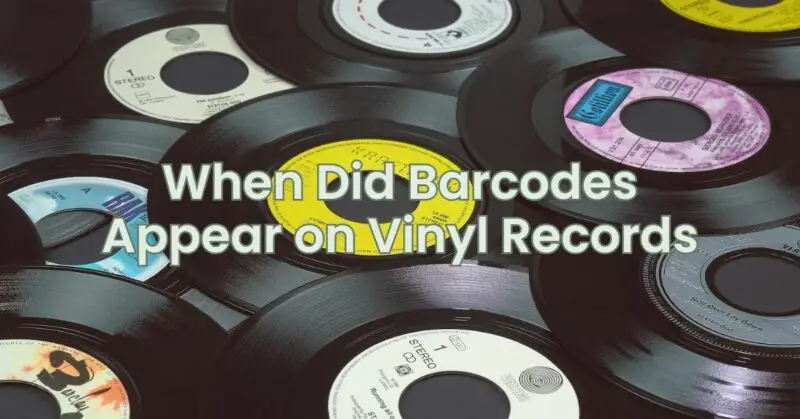Barcodes revolutionized inventory management and product tracking, streamlining the retail industry’s operations. While they are commonly associated with consumer goods, the adoption of barcodes also made its way into the world of vinyl records. In this article, we will explore the timeline and significance of when barcodes made their appearance on vinyl records, transforming the way these musical treasures were identified and managed.
Early Days of Vinyl Records: Vinyl records have been a popular medium for music playback since the early 20th century. However, in the early years, records relied on various methods to identify and catalog them, such as paper labels, handwritten information, or etchings on the run-out grooves. These identification methods were often prone to errors, inefficiencies, and limited compatibility with automated inventory systems.
The Barcode Revolution: The implementation of barcodes in various industries began to gain traction in the late 1960s and early 1970s, offering a standardized and efficient method of product identification and tracking. It was only a matter of time before the music industry recognized the benefits of adopting barcodes for vinyl records.
The Arrival of Barcodes on Vinyl Records: In the late 1970s and early 1980s, the music industry began integrating barcodes onto vinyl records, significantly transforming the way records were managed, tracked, and sold. The introduction of barcodes on vinyl records allowed for faster and more accurate inventory management, pricing, and point-of-sale processes. Here are some notable milestones in the timeline of barcode adoption on vinyl records:
- Universal Product Code (UPC): The Universal Product Code (UPC) became the most widely recognized barcode symbology. It consists of a series of black bars and white spaces representing a unique numerical identifier for each product. The UPC barcode system made its debut in 1974 when a pack of Wrigley’s chewing gum was scanned at a supermarket checkout counter for the first time.
- Barcodes on Album Covers: By the late 1970s, major record labels recognized the potential of barcodes in improving inventory management and sales tracking. They began incorporating barcodes on the back covers or inner sleeves of vinyl records. These barcodes allowed retailers to scan records quickly, automatically updating inventory, and simplifying the checkout process.
- Expanded Usage: As barcodes gained popularity, their presence on vinyl records expanded beyond major labels. Independent record labels and smaller releases also started including barcodes on their album covers. This wider adoption enabled a more comprehensive and standardized approach to record management across the industry.
- Technological Advancements: With the advent of computerized systems, barcode scanning devices became more accessible and affordable for retailers. This facilitated the widespread adoption and utilization of barcodes for vinyl records, making the process of tracking and managing inventory more efficient.
Conclusion: The integration of barcodes on vinyl records marked a significant advancement in the way the music industry managed and sold records. By adopting the Universal Product Code (UPC) system, record labels enhanced inventory management, pricing accuracy, and sales tracking. The inclusion of barcodes on album covers allowed for faster and more efficient checkout processes, benefiting both retailers and consumers. Today, barcodes have become a ubiquitous feature on vinyl records, enabling seamless integration with modern inventory systems and facilitating the continued growth of the vinyl record market.


